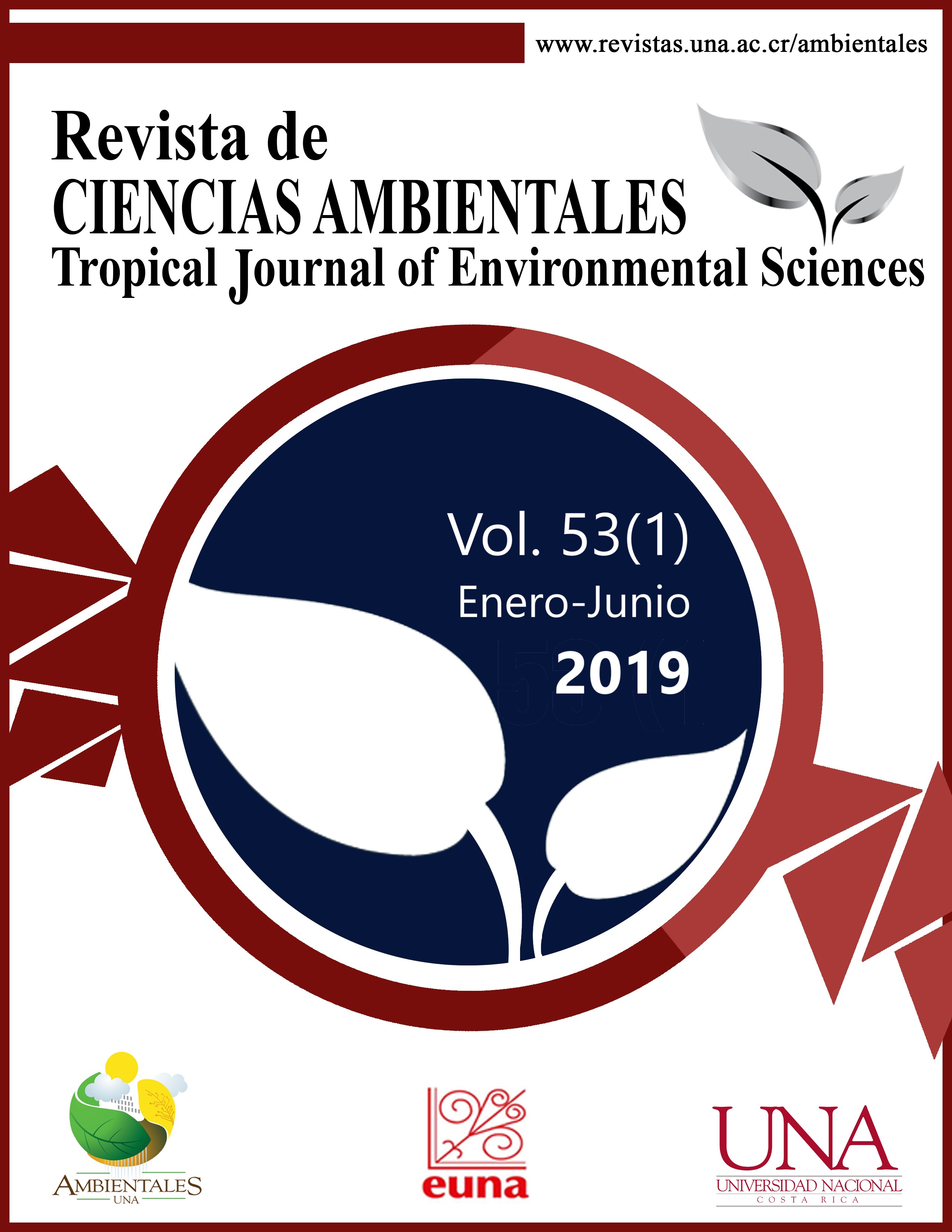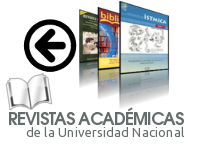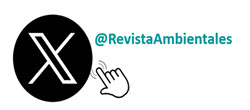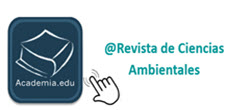Effects of a Crude Oil Spill in the Benthic Macroinvertebrate Community of an Ecuadorian Amazon River
DOI:
https://doi.org/10.15359/rca.53-1.1Keywords:
Biotic indices; ecological recovery; Neotropics.Abstract
Oil spills are a major source of disturbance to benthic macroinvertebrates from inland waters. However, studies regarding these disturbances in tropical regions, and particularly in the Neotropics, are limited. This study evaluates the effects of a 11,700-barrel heavy crude oil spill on the benthic macroinvertebrate community of Santa Rosa, Quijos and Coca rivers, Ecuadorian Amazon. The evaluation used a biotic index and water quality and sediments variables, both in the impacted sites and in the reference sites during two field trips in 2011 and 2012. Spearman correlations established significant negative relationships (p <0.05) between total petroleum hydrocarbons and Ephemeroptera-Plecoptera-Trichoptera (EPT index), Trichoptera, and Elmidae family taxa. An inverse relationship was established between the SIGNAL2 index and total petroleum hydrocarbons. A multiple response permutation procedure (MRPP) determined a difference between the macroinvertebrate communities of reference and the impacted stations in 2011, and between the macroinvertebrate communities of reference stations 2011 and stations impacted in 2012. Non-metric multidimensional scaling involved using three dimensions, in which axis two was better related to total petroleum hydrocarbons (r = 0.45). These results suggest that factors other than total petroleum hydrocarbons are responsible for the heterogeneous composition of the macroinvertebrate communities.
References
Alemán, M. Á., Branch, E. I., Bermeo, R., SA, O. E., Mendizábal, A., & Loon, W. (2010). Successful Social Environmental Management Model, Implemented in Ecuador to Overcome Impacts From a Heavy Crude Oil Spill. 2010 8th International Pipeline Conference (pp. 149-158). American Society of Mechanical Engineers. https://doi.org/10.1115/IPC2010-31179
American Public Health Association [APHA]. (2005). Standard Methods for the Examination of Water and Wastewater. 21st ed. American Public Health Association, Washington DC, 1220p.
Araújo, C. V., Moreira-Santos, M., Sousa, J. P., Ochoa-Herrera, V., Encalada, A. C., & Ribeiro, R. (2014). Contaminants as habitat disturbers: PAH-driven drift by Andean paramo stream insects. Ecotoxicology and environmental safety, 108, 89-94. https://doi.org/10.1016/j.ecoenv.2014.06.034
Barton, D. R., & Wallace, R. R. (1979). The effects of an experimental spillage of oil sands tailings sludge on benthic invertebrates. Environmental Pollution (1970), 18(4), 305-312. https://doi.org/10.1016/0013-9327(79)90025-9
Bugbee, S. L., & Walter, C. M. (1973). The response of macroinvertebrates to gasoline pollution in a mountain stream. International Oil Spill Conference (Vol. 1973, No. 1, pp. 725-731). American Petroleum Institute. https://doi.org/10.7901/2169-3358-1973-1-725
Couceiro, S. R., Hamada, N., Ferreira, R. L., Forsberg, B. R., & Da silva, J. O. (2007). Domestic sewage and oil spills in streams: effects on edaphic invertebrates in flooded forest, Manaus, Amazonas, Brazil. Water, air, and soil pollution, 180(1-4), 249-259. https://doi.org/10.1007/s11270-006-9267-y
Cueva Sánchez, M. G. (2013). Efectos del derrame de petróleo sobre la dinámica ecológica de las comunidades zooplanctónicas de la laguna de Papallacta (Bachelor's tesis). Universidad Internacional del Ecuador. Recuperado de http://repositorio.uide.edu.ec/bitstream/37000/298/1/T-UIDE-0277.pdf
Crunkilton, R. L., & Duchrow, R. M. (1990). Impact of a massive crude oil spill on the invertebrate fauna of a Missouri Ozark stream. Environmental Pollution, 63(1), 13-31. https://doi.org/10.1016/0269-7491(90)90100-Q
De Pauw, N., & Vanhooren, G. (1983). Method for biological quality assessment of watercourses in Belgium. Hydrobiologia, 100(1), 153-168. https://doi.org/10.1007/BF00027428
Domínguez, E., & Fernández, H. R. (2009). Macroinvertebrados bentónicos sudamericanos: Sistemática y biología. Fundación Miguel Lillo, Tucumán, Argentina, 656.
Dufrêne, M., & Legendre, P. (1997). Species assemblages and indicator species: the need for a flexible asymmetrical approach. Ecological monographs, 67(3), 345-366. https://doi.org/10.1890/0012-9615(1997)067[0345:SAAIST]2.0.CO;2
https://doi.org/10.2307/2963459
Faith, D. P., Minchin, P. R., & Belbin, L. (1987). Compositional dissimilarity as a robust measure of ecological distance. Vegetatio, 69(1-3), 57-68. https://doi.org/10.1007/BF00038687
Harrel, R. C. (1985). Effects of a crude oil spill on water quality and macrobenthos of a southeast Texas stream. Hydrobiologia, 124(3), 223-228. https://doi.org/10.1007/BF00015238
Hawkes, H. A. (1998). Origin and development of the biological monitoring working party score system. Water Research, 32(3), 964-968. https://doi.org/10.1016/S0043-1354(97)00275-3
Lytle, D. A., & Peckarsky, B. L. (2001). Spatial and temporal impacts of a diesel fuel spill on stream invertebrates. Freshwater Biology, 46(5), 693-704. https://doi.org/10.1046/j.1365-2427.2001.00695.x
Masnik, M. T., Stauffer, J. R., Hocutt, C. H., & Wilson, J. H. (1976). The effects of an oil spill on the macroinvertebrates and fish in a small southwestern Virginia creek. Journal of Environmental Science & Health Part A, 11(4-5), 281-296. https://doi.org/10.1080/10934527609385771
Mendizábal, A., Samaniego, R., & Aleman, M. A. (2012). Three years later–conclusion of a successful social-environmental management model to overcome the impacts of a heavy crude oil spill. 2012 9th International Pipeline Conference (pp. 263-274). American Society of Mechanical Engineers. https://doi.org/10.1115/IPC2012-90009
Molina Santos, M. G. (2013). Efectos del derrame de petróleo sobre la comunidad Fitoplanctónica de la laguna de Papallacta y sus principales afluentes (Tesis de bachillerato) UIDE, Quito. Recuperado de http://repositorio.uide.edu.ec/bitstream/37000/301/1/T-UIDE-0280.pdf
Ort, M. P., Finger, S. E., & Jones, J. R. (1995). Toxicity of crude oil to the mayfly, Hexagenia bilineata (Ephemeroptera: Ephemeridae). Environmental Pollution, 90(1), 105-110. https://doi.org/10.1016/0269-7491(94)00085-R
Parker, B. L., Brammer, J. D., Whalon, M. E., & Berry, W. O. (1976). Chronic oil contamination and aquatic organisms with emphasis on Diptera: status and bibliography. JAWRA Journal of the American Water Resources Association, 12(2), 291-305. https://doi.org/10.1111/j.1752-1688.1976.tb02680.x
Paumen, M. L., Borgman, E., Kraak, M. H., Van Gestel, C. A., & Admiraal, W. (2008). Life cycle responses of the midge Chironomus riparius to polycyclic aromatic compound exposure. Environmental pollution, 152(1), 225-232. https://doi.org/10.1016/j.envpol.2007.04.027
Pettigrove, V., & Hoffmann, A. (2005). Effects of long‐chain hydrocarbon‐polluted sediment on freshwater macroinvertebrates. Environmental Toxicology and Chemistry, 24(10), 2500-2508. https://doi.org/10.1897/05-018R.1
Poulton, B. C., Finger, S. E., & Humphrey, S. A. (1997). Effects of a crude oil spill on the benthic invertebrate community in the Gasconade River, Missouri. Archives of Environmental Contamination and Toxicology, 33(3), 268-276. https://doi.org/10.1007/s002449900253
Roldán, G. (1988). Guía para el estudio de los macroinvertebrados acuáticos del Departamento de Antioquia. Universidad de Antioquia, Fondo FEN, Medellín.
Rosenberg, D. M., & Wiens, A. P. (1976). Community and species responses of Chironomidae (Diptera) to contamination of fresh waters by crude oil and petroleum products, with special reference to the Trail River, Northwest Territories. Journal of the Fisheries Board of Canada, 33(9), 1955-1963. https://doi.org/10.1139/f76-249
Smith, P., Snook, D., Muscutt, A., & Smith, A. (2010). Effects of a diesel spill on freshwater macroinvertebrates in two urban watercourses, Wiltshire, UK. Water and Environment Journal, 24(4), 249-260. https://doi.org/10.1111/j.1747-6593.2009.00168.x
Strahler, A. N. (1957). Quantitative analysis of watershed geomorphology. Eos, Transactions American Geophysical Union, 38(6), 913-920. https://doi.org/10.1029/TR038i006p00913
Vannote, R. L., Minshall, G. W., Cummins, K. W., Sedell, J. R., & Cushing, C. E. (1980). The river continuum concept. Canadian journal of fisheries and aquatic sciences, 37(1), 130-137. https://doi.org/10.1139/f80-017
Vinson, M. R., Dinger, E. C., Kotynek, J., & Dethier, M. (2008). Effects of oil pollution on aquatic macroinvertebrate assemblages in Gabon wetlands. African Journal of Aquatic Science, 33(3), 261-268. https://doi.org/10.2989/AJAS.2008.33.3.9.621
Zar, J. H. (1996). Biostatistical analysis. Prentice-Hall International. Inc., London.
Downloads
Published
How to Cite
Issue
Section
License

This work is licensed under a Creative Commons Attribution-NonCommercial-ShareAlike 4.0 International License.



















